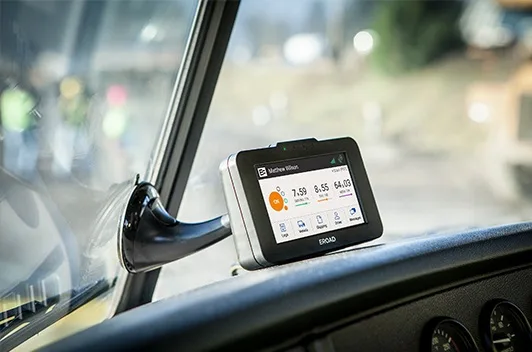Have you ever wondered how truckers can keep track of their driving hours? The ELD mandate is the answer, revolutionizing the trucking industry by enforcing the use of electronic logging devices (ELDs) across commercial motor vehicles.
Andrew from Matrack, a seasoned expert in ELD implementation and compliance, provides key insights into understanding this mandate’s requirements, implications, and industry-wide impact.Let’s unpack this mandate in detail and explore what it means for drivers and carriers alike.
What is the ELD Mandate?
The ELD mandate, formalized by the Federal Motor Carrier Safety Administration (FMCSA), requires most commercial motor vehicle operators to replace traditional paper logs and outdated tracking devices with electronic logging devices to ensure compliance with hours of service (HOS) regulations. This mandate was established under the ‘Moving Ahead for Progress in the 21st Century Act’ and is a crucial step toward improving roadway safety by minimizing driver fatigue. Andrew explains, “The mandate is part of a larger initiative to curb driver fatigue and prevent accidents by making accurate tracking of driving hours mandatory.”
What Exactly Is an Electronic Logging Device?
In simple terms, an Electronic Logging Device (ELD) is a tool that connects to a truck’s engine to automatically record driving time, engine hours, vehicle movements, and miles driven. ELDs are designed to enhance precision and crack down on erroneous reports that might occur if drivers manually log their activities.
Why the ELD Mandate Came into Play
Before the ELD mandate, drivers relied on paper logbooks, which were susceptible to errors and sometimes exploitation under pressure from employers. The switch to electronic logs reduces these inaccuracies and improves road safety. With the ELDs’ scrutiny of driving time and rest periods, regulators aim to decrease fatigue-related accidents by enforcing pre-defined rest periods and driving limits strictly. Andrew emphasizes, “ELDs bring objectivity into HOS compliance, helping both drivers and employers maintain safety without violating rest requirements or driving limits.”
Who Must Comply with the ELD Mandate?
The ELD mandate applies broadly to commercial motor drivers who are required to keep records of duty status (RODS). This typically includes:
- Drivers operating vehicles weighing over 10,001 pounds.
- Vehicles involved in transporting hazardous materials that require placards.
- Buses and vehicles designed to carry more than 8 passengers for compensation.
- Drivers in interstate commerce.
However, there are specific exemptions for the ELD mandate. For example, drivers of vehicles manufactured before the year 2000 and those operating short-haul routes (within a 150-air-mile radius) may continue using paper logs.
Impact on Hours of Service (HOS)
The integration of ELDs does not change how hours of service (HOS) regulations are defined; it reinforces adherence to them by automating compliance. Drivers must use ELDs to note their duty status with precision — whether on duty, driving, off duty, or resting in a sleeper berth, offering a more reliable record of compliance.
Benefits of ELDs
The benefits of using ELDs extend beyond compliance. These devices enhance operational efficiency, provide real-time vehicle monitoring, and reduce administrative burdens on drivers. Speedier roadside inspections and precise data transfer streamline regulatory encounters, optimizing fleet management decisions.
Challenges and Criticisms
Despite their benefits, the transition to ELDs isn’t without controversy. Some drivers and carriers have expressed concerns over privacy and potential overreach by employers. Regulatory provisions include maintaining a safe boundary between tracking and personal driver information to gain acceptance and trust from industry stakeholders.
Conclusion
The ELD mandate has undeniably reshaped the trucking landscape, fostering a safer environment for drivers and the public. As the industry continues to adapt, ELDs stand as a symbol of progress towards a future where safety, compliance, and efficiency go hand in hand. Understanding these changes and remaining compliant is crucial for anyone working in or with the trucking industry to succeed in this new regulatory era.
FAQs
Are AOBRDs still acceptable under the ELD mandate? Automatic On-Board Recording Devices (AOBRDs) were transitional devices accepted until December 2019. After this date, full compliance requires the use of FMCSA-approved ELDs.
Can a smartphone be used as an ELD? Yes, as long as it meets FMCSA specifications and remains mounted visibly within the driver’s reach.


